There hemlock (Conium maculatum) is a plant belonging to the family of Apiaceae. She is also known by the name of greater hemlock and it is one of the poisonous plants most famous in history. Its danger is due to the fact that it is a very common spontaneous plant, easy to confuse with other species of the same botanical family considered harmless or even beneficial.
It is therefore important to know how to recognize and understand the serious risks associated with its accidental intake.
Names of hemlock
The scientific name of the genus Conium comes from the Greek term Keneinon= large hemlock, while the epithet of the species, maculatum it is of Latin origin and refers to the purple spots present along the stem. This plant is known a little all over the world, in English-speaking countries it is called poison hemlockin France ciguë tachetéein Germany gefleckter schierling. There are also numerous Italian regional names, for example: follow in Liguria, f’nojass in Piedmont, sciguda in Lombardy, venomous sigua in Veneto, zicuta And zguda in Emilia-Romagna, cicuto And ukraine in Tuscany, addurmisci in Sicily, pudimanu And feurredda in Sardinia.
How to recognize hemlock
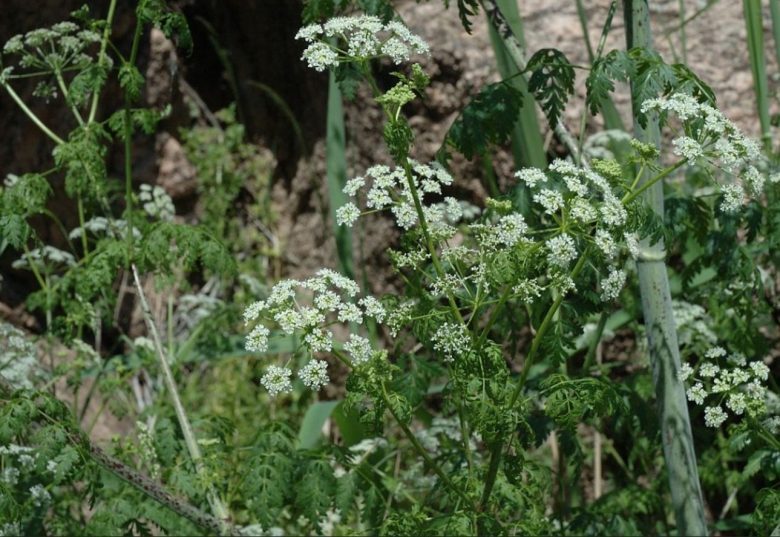
Hemlock is a herbaceous plant with a biennial and perennial cycle by means of buds placed at ground level. In the first year it produces only basal leaves. In the second it develops the stem, 1.5 to 2 m high, erect, often without leaves, branched only at the top, with the surface furrowed by longitudinal streaks and with numerous irregular red-brown spots.
Leaves
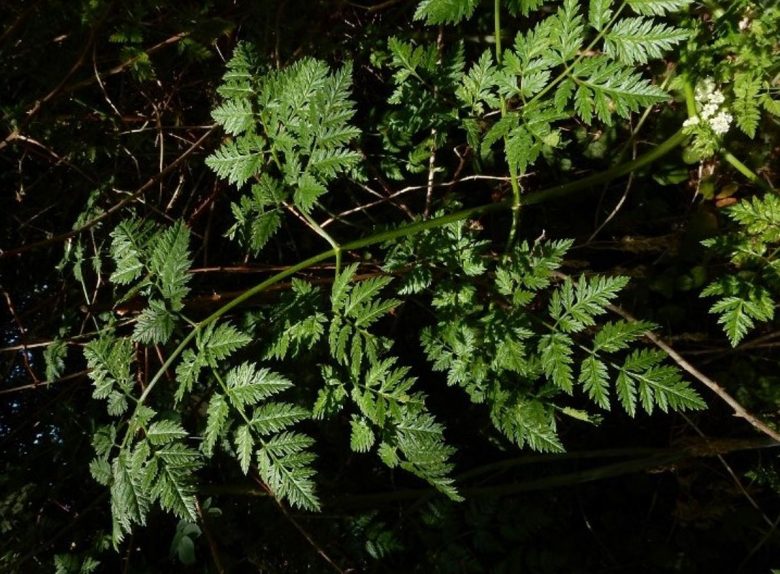
The leaves of the hemlock are alternate, have a robust petiole similar to the stem and dilated at the base. The flap has a triangular outline and is tripennatosetto, with sharp oval-oblong segments and with a slightly indented margin.
Flowers
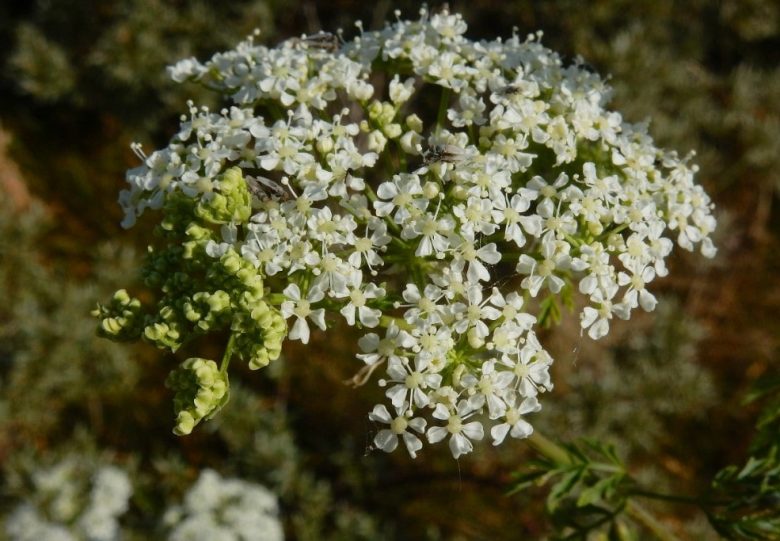
The flowers have the typical appearance of apiacea (umbellifers). They are gathered in large umbrellas which are themselves made up of umbrellas. The chalice has five very small sepals, welded together at the base. The corolla is made up of five white, oval and spatulated petals.
The flowering period is very long and variable according to the climatic range, in fact it embraces two seasons, spring and summer.
Fruits
The fruit is given by two achenes of a plano-convex shape, each with 5 protruding ribs.
Where hemlock grows
Hemlock grows throughout Italy, from sea level to the sub-mountain area. We can say that it grows in the climatic range between olive tree cultivation and that of the superior chestnut.
It prefers shady places, grasslands, rubble, the edges of hedges and woods, vegetable gardens.
Risk of confusion of hemlock with other plants
The plant can easily be confused with other botanical species. First of all with the Cicuta virosa and with theAethusa cynapium. Other plants at risk of confusion, always of the apiacea family, are the chervilthe wild carrot and even the parsley (during the first year of growth). Unlike these very fragrant plants though, hemlock has a nauseating smell.
However, the advice we give is to pay absolute attention when going to fields a collect edible wild herbs. If you are not absolutely sure of the botanical identification, it is better to leave the wild plants in their place, just admiring them.
Active ingredients of hemlock, toxicity and symptoms
All parts of the hemlock are strongly toxic. The active ingredients contained in the plant are: conin or cicutin, conicein, conhydrin, pseudoconhydrin, methylconicin, or 5 toxic alkaloids, very dangerous, which cause poisoning symptoms typical of this class of neurotoxins. The effects of poisoning consist of: strong salivation, intense muscle tremor, diffuse spasms, death by respiratory collapse.
There is no antidote to cure hemlock poisoning, the severity of symptoms depends on the amount of active ingredients ingested, potentially lethal. The only possible treatment is gastrointestinal decontamination.
Direct poisoning is a rare hypothesis, due to the strong and bad smell of the plant, unless you engage in reckless behavior. However, there may be risks of indirect poisoning, for example by eating large quantities of game which in turn has ingested many seeds of the plant, thus accumulating toxic alkaloids in the meat.
Hemlock and folk medicine
In ancient times, hemlock was used in folk medicine as a sedative, analgesic and antispasmodic, but the evident risk associated with improper use and the difficulty of establishing exact dosages, meant that this practice was abandoned.
Curiosity
Hemlock is a plant that recurs frequently in history. In ancient Greece it was used to carry out death sentences, the most famous being that of the philosopher Socrates in 399 BC and described inPlato’s work “Phaedo”.

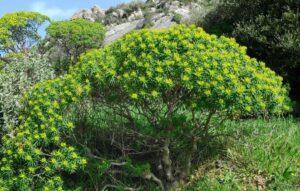
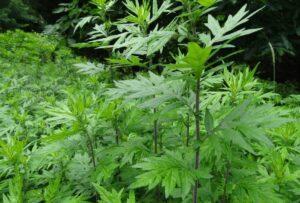
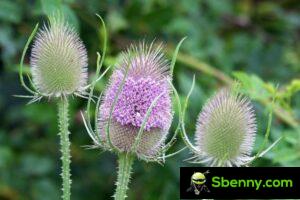
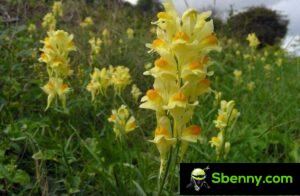
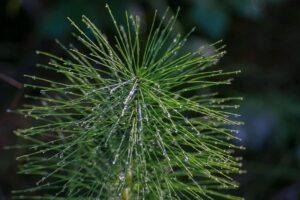
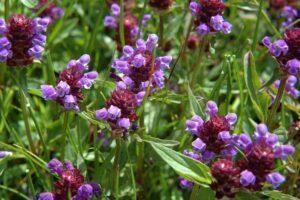
Start a new Thread